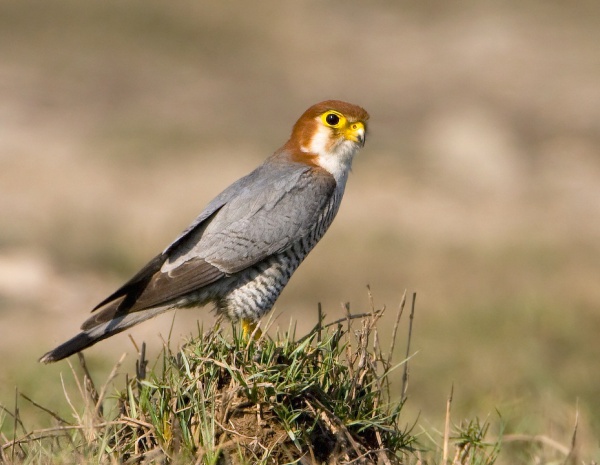Facts About Red-necked falcon
The red-necked falcon, a striking bird of prey from the falcon family, comprises two distinct populations: one in India and the other in Africa. In India, this bird is often referred to as the red-headed merlin and is commonly found in the open plains of the Indian subcontinent. The African counterpart, sometimes considered a separate species known as the rufous-necked falcon, exhibits unique characteristics that set it apart.
These medium-sized falcons are easily identified by their bluish-grey wings, chestnut-red cap, and distinctive markings on their wings and tails. Typically, they hunt in pairs during dawn and dusk, preying on small birds, bats, and squirrels.
Measuring about 30–36 cm in length with a wingspan of 85 cm, males are generally smaller than females. Juvenile birds have different plumage compared to adults. The African form is distinguished by a white face with black stripes, while the Indian form features rufous moustachial stripes. Their preferred habitats include semi-desert regions, savannahs, and open areas with trees. While they are mostly sedentary, they may move nomadically in response to weather changes.
Red-necked falcons are adept hunters, primarily targeting birds in open areas, but their diet also includes mice, lizards, and large insects. Their breeding season varies depending on the location. Pairs often reuse old nests or construct new ones in trees. The female is responsible for incubating the eggs and feeding the chicks, which fledge after about 35–48 days. Historically, these falcons were popular among Indian falconers due to their impressive hunting abilities.
In captivity, red-necked falcons can be vulnerable to diseases like Newcastle disease and parasites such as Trichomonas and nematodes. The taxonomy of this species has been a subject of debate, with some experts treating the Indian and African forms as distinct species due to their long separation, estimated to be around 0.9 million years. The red-necked falcon’s distinctive features, intriguing behavior, diverse habitats, and varied diet make it a fascinating species to study and observe.

 Cameroon
Cameroon